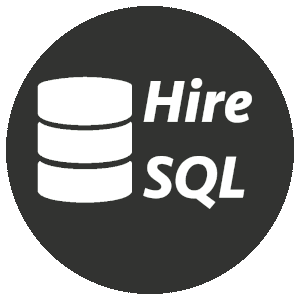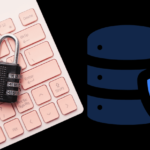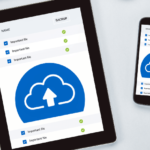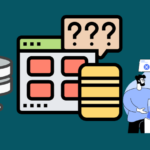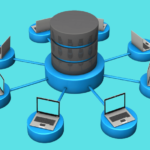React Native, a JavaScript framework for writing real, natively rendering mobile applications, is growing in popularity among developers. As mobile applications evolve, the need for efficient data handling and storage becomes essential. This article will delve into the importance of local databases in React Native and review some of the top options available. The goal is to guide you through the process of choosing the right local database for your needs.
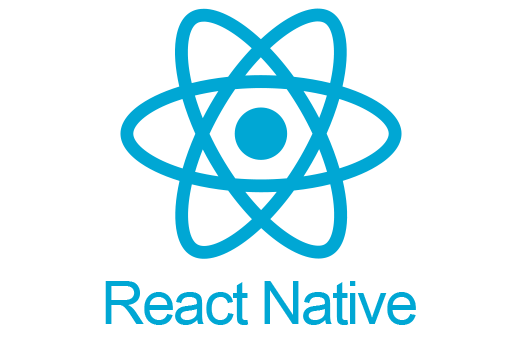
What is a Local Database?
A local database refers to a data storage system that resides on the same device as the application. It allows the app to store and retrieve data even when there’s no network connection, thus enhancing the app’s offline capabilities. For React Native applications, this means improved performance, faster response times, and a smoother user experience.
In the realm of React Native, local databases play a crucial role in shaping the overall performance and functionality of the application. They are responsible for managing the data efficiently and ensuring data safety and security.
Key Considerations for Choosing a React Native Local Database
Choosing the right database can make a significant difference in the performance and functionality of your React Native app. Here are some critical considerations:
Space Management
A competent database effectively manages memory, preventing frequent crashes and improving user experience. Look for a database that employs memory handling practices like compaction.
Data Conflicts Resolution
If your app involves many cooperation features, your database needs to handle data conflicts well. The right database should employ advanced solutions to resolve such issues.
Security
Security is paramount. A good database should protect the stored data from any leak or hack. It should employ all means to keep your users’ information safe.
Off-Grid Synchronization
For apps with team engagement features, a database capable of offline synchronization is a must. This ensures all team members have the same information for productive collaboration.
Data Types & Complexity
Most mobile applications use key-value pairs and JSON format to store data. However, if you need to store full documents and objects, you will need a more sophisticated database.
Usability
The less code and effort it takes to administer a database, the better. This factor greatly impacts both developers’ work and the database performance itself1.
Review of Top React Native Local Databases
Let’s delve into some of the top local databases for React Native, starting with Realm.
Realm
Realm is an open-source database, capable of handling large amounts of data while remaining highly performant. Its key features include:
- Easy-to-use: Realm is object-oriented, which means you can access fields and other objects more easily using elementary annotations. It frees you from manual query conversion and carries it out automatically.
// Example of how easy it is to use Realm
const realm = new Realm();
let books = realm.objects('Book');
- Cross-platform: Realm stores information in universal-code tables or native object format, making the database easily accessible across different platforms that use various languages1.
- Fast: Realm uses zero-copy cloning and object databases to speed up its processes. This results in faster data retrieval and improved app performance1.
- Concurrent: Realm provides concurrency control employing the MVCC model. This allows the database to handle multiple write/read transactions simultaneously1.
Further information about Realm can be found in the Official Realm Database Documentation.
Firebase

Firebase, a Google-backed platform, provides a NoSQL database called Cloud Firestore. It’s a flexible, scalable database for mobile, web, and server development. Firebase also maintains its data in real time, and developers can listen to changes in data in real-time. Firebase’s other key features include:
- Easy project setup: Firebase provides easy setup options for your applications, enabling the seamless building of hybrid applications.
- Customizable workflows for iOS and Android: Firebase was built with cross-platform app development in mind. It allows full control over your pipeline with workflows that fit the needs of your development team.
- Seamless code signing for iOS and Android: Firebase takes care of creating and managing signing certificates and provisioning profiles for you, simplifying the code signing process.
- Distribute apps with ease: Firebase allows easy distribution of your app to testers or automatic publishing to the Apple App Store or Google Play
You can learn more about Firebase in the Official Firebase Documentation.
SQLite

SQLite is a C library that provides a lightweight disk-based database. It allows developers to persist user data and offers SQL interface for database management. Key features include:
- Serverless: SQLite doesn’t require a separate server process or system to operate. The SQLite library accesses its storage files directly.
- Zero-Configuration: SQLite doesn’t need to be installed before it’s used. There’s no setup or administration required.
- Transactional: SQLite transactions are fully ACID-compliant, allowing safe access from multiple processes or threads.
- Cross-Platform: SQLite database files are cross-platform – they can be copied between 32-bit and 64-bit systems or between big-endian and little-endian architectures.
// Example of how to use SQLite in React Native
import SQLite from 'react-native-sqlite-storage';
let db = SQLite.openDatabase({name: 'my.db', location: 'default'});
You can find more about SQLite in the Official SQLite Documentation.
Frequently Asked Questions (FAQs)
In this section, we’ll address some common questions related to React Native Local Databases.
What is the best local database for React Native?
The “best” local database for React Native depends on your specific needs and requirements. Realm, Firebase, and SQLite are all excellent options, each with its own strengths and weaknesses. Consider your app’s requirements for space management, data conflicts resolution, security, off-grid synchronization, data types and complexity, and usability before making a decision.
Is Firebase a local database?
Firebase is a cloud-based NoSQL database. However, it does offer offline capabilities. Firebase automatically stores data locally when an app goes offline and synchronizes it with the Firebase cloud when the app goes back online.
Can SQLite handle large amounts of data?
SQLite is capable of managing large databases. An SQLite database can be as large as 140 terabytes. However, because SQLite reads and writes directly to ordinary disk files, the database size can also be limited by the file system or the disk capacity.
Is Realm free to use?
Realm is free to use and is open-source. However, they also offer a paid version, Realm Platform, which provides additional features such as real-time automatic data syncing across devices and user authentication services.
Conclusion
Choosing the right local database for your React Native app is crucial for ensuring optimal performance and a smooth user experience. Whether you choose Realm, Firebase, or SQLite will depend on your specific needs and the features that each database offers. Consider factors like space management, data conflicts resolution, security, off-grid synchronization, data types and complexity, and usability when making your choice.
If you’re considering using a NoSQL database, you might want to look into hiring a NoSQL developer to assist with your project. Remember, thebest database is the one that best meets your app’s requirements and makes development easier and more efficient. With the right database, your app can offer a seamless and enjoyable experience for your users.
Remember, the choice of database is one of the many decisions you’ll make in the app development process. Be sure to take into account the specific needs of your project and choose the database that aligns with those requirements. Whether you go with Realm, Firebase, SQLite, or another option, understanding the strengths and limitations of each will help you make an informed decision.
Choosing the right tools and frameworks from the start will save you a lot of time and effort down the road. So, invest some time in understanding these databases and make a choice that will benefit your app in the long run.
In the end, a well-designed and well-implemented app is more about the skills and understanding of the development team than the particular tools or databases used. So, make sure you have a solid team behind you, and don’t be afraid to ask for help when you need it. It’s all part of the process of creating a great app.
James is a highly acclaimed author renowned for his extensive experience in the realm of data development and architecture, offering valuable insights to the data industry through his compelling literary works. Residing in the charming city of Oxford, he embarked on an illustrious academic journey at Oxford University, where he delved into the intricate world of computer science. This foundation served as the catalyst for his exceptional career.
After completing his studies, James embarked on a professional path that led him to renowned technology giants. He first honed his skills as a data developer at Microsoft, where he showcased his prowess in designing and implementing robust data solutions. His innovative contributions played a pivotal role in enhancing data management processes, solidifying his reputation as a meticulous and forward-thinking professional.
Seeking new challenges and broader horizons, James embarked on a transformative journey at Amazon Web Services (AWS). In this influential position, he leveraged his profound understanding of data architecture to shape cutting-edge solutions for clients. His leadership and technical acumen enabled businesses to harness the power of cloud computing and revolutionize their data management practices, further solidifying his status as an industry authority.
